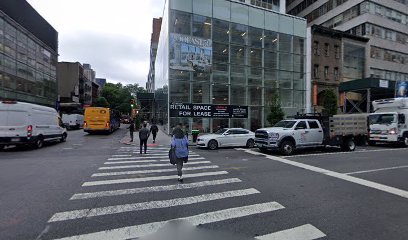The subway crooks simply can’t be stopped: New statistics revealed by the MTA show that the number of major felonies committed every day underground jumped 29 percent since last year.
On average, eight major felonies were committed daily in January of this year, up from six average per day in January of 2011 and January of 2010.
The number of felonies committed every day on the subway combines major crimes like murder, rape, robbery, assault and grand larceny. The total number of major felonies committed in Jan. 2011 was 193, while this year it was a whopping 250. MTA statistics revealed that the increase in crime was due to robberies, 21 more than last year, and grand larcenies, 57 more than in 2011.
NYPD Transit Bureau Chief Joseph Fox said police are fighting to reverse the rise of cell phone and other electronic gadget theft, which accelerated when the iPhone 4 debuted last July.
“People feel at ease using their handheld electronic devices on the subway system. A subway station or the inside of a train seems like an ideal place to catch up on e-mail,” Fox said, but the reality is that this “has resulted in a law enforcement challenge.”
Fox said the theft of electronics represented 59 percent of all crimes committed in January of this year, up from 42 percent in Jan. 2011.
“Cell phone theft has been increasing steadily as smartphones began to dominate the market,” Fox said.
The NYPD has increased its subway efforts, Fox said, increasing the number of officers and undercover officers underground. Police arrested 69 thieves on grand larceny charges, the crime most commonly associated with cell phone theft, this year so far, up 28 percent from last year, Fox said.
The bureau has even increased overtime, deploying 320 officers working four extra hours on their shifts to patrol platforms, Fox said.
Board member Andrew Albert was still concerned. “The police cannot be everywhere,” he said.
Elevator, escalator outages plague subway
The MTA released its quarterly elevator and escalator report yesterday, revealing the ups and downs of the subway system. From October to December of last year, there were 94 elevator entrapments, the majority of them, 49, in Manhattan.
The elevator that trapped people the most was the 5-year-old 191st Street elevator on the 1 line, which had five entrapments.
The most shocking revelation in the report was the condition of the Lexington Avenue-53rd Street E, M, 6 station. An escalator at that station recorded 70 unscheduled outages in just a three-month span last year and one elevator was available for only 54 percent of the time.
People who the frequent the station say it’s a mess. “I’ve been using this station for 10 years,” Brenda Carpenter, 59, of Forest Hills said. “It’s been unacceptable since it was brand new.”
Off-peak bus fares pitched
Bus ridership continues to decline: The average weekday local bus ridership in 2011 decreased by 4.3 percent and express bus ridership sank 2.2 percent. New York City Transit president Thomas Prendergast described the situation as “dire” and one MTA board member, Charles Moerdler, suggested the MTA revamp the bus system for fewer passengers.
“We have to start looking at the possibility of smaller buses in areas where there are not many people who need that service,” Moerdler said. “And maybe a discounted fair for off-peak hours, so as to encourage people back to using the buses.”
Prendergast responded that both ideas would be “looked at,” but said that the establishment of a fleet of smaller buses would be complicated.
Subway maps still hit or miss
For the second year in a row, the MTA’s Passenger Environment Survey revealed that the MTA isn’t great with signage. According to the survey, only 49 percent of stations had a correct or legible subway system map. An MTA spokesman explained that outdated maps are rarely on display, but if there is any graffiti, stickers or signage blocking any part of a map, it’s considered illegible.
New Yorkers prefer plastic in taxis
More and more New Yorkers are paying their taxi fares with credit cards, according to the Taxi and Limousine Commission. In the last month alone, nearly half of all trips were paid for with plastic. Furthermore, those trips represented 55 percent of the total amount of money collected in the entire taxi industry. TLC commissioner David Yassky credits the cards with helping the taxi industry endure the recession. “There is a compelling argument that credit card acceptance allowed the taxi industry to weather the worst of the economic downturn far better than other businesses,” Yassky said yesterday.
Follow Emily Anne Epstein on Twitter @EmilyAEpstein
















